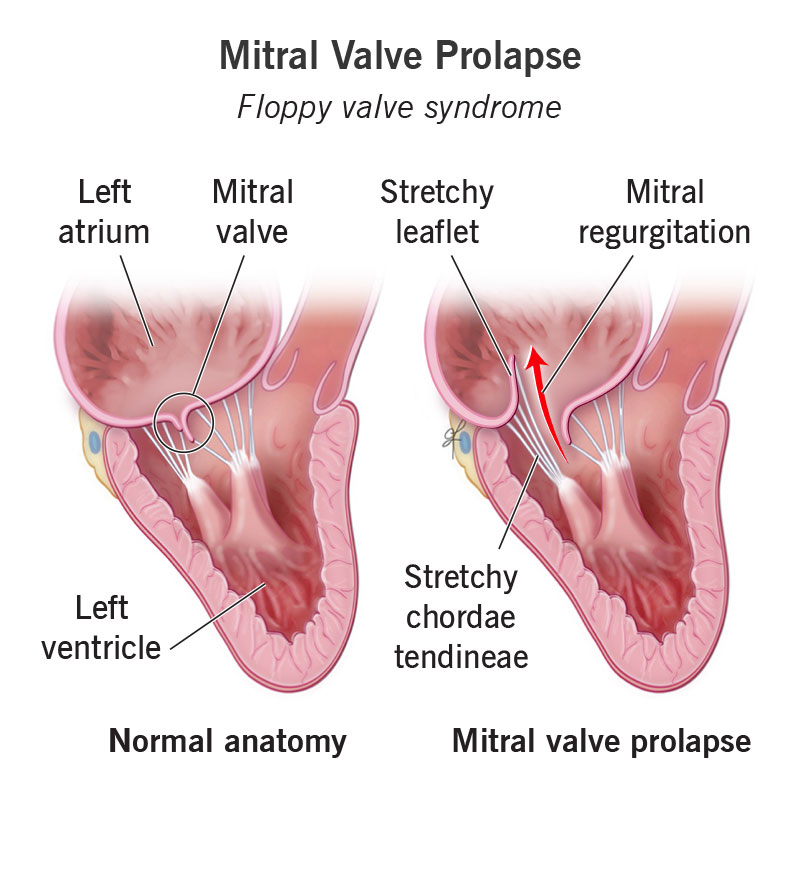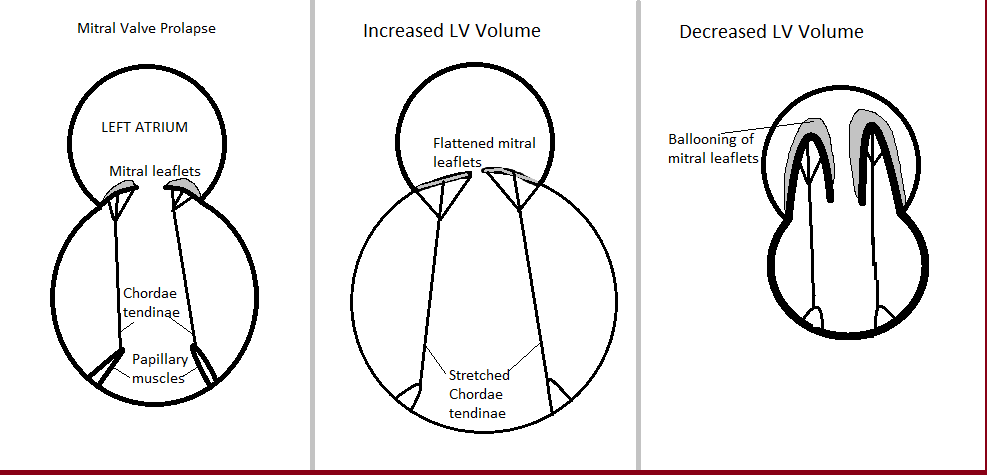Epidemiology
Etiology
- Mostly idiopathic
- Connective tissue disorders: Marfan syndrome, Ehlers-Danlos syndrome, osteogenesis imperfecta
- Acute rheumatic heart disease
- Infective endocarditis
Pathophysiology

- The most common underlying pathology in the case of mitral valve prolapse is myxomatous degeneration (deposition of glycosaminoglycan such as dermatan sulfate) of the mitral valve due to a primary disease or connective tissue disorder
- Long, floppy mitral valve leaflets with excessive valvular tissue → the mitral annulus becomes dilated and the chordae tendineae become elongated (and may rupture) → prolapse of one or both mitral valve leaflets into the left atrium during systole
Clinical features

- Any activity that decreases the left ventricular volume (e.g. standing) will exaggerate the tendency for prolapse. Thus the click and the murmur moves closer to S1.
- Any activity that increases the left ventricular volume (e.g. squatting) will decrease tendency for prolapse. Thus the click and the murmur moves close to S2, or not happen at all.
Diagnostics
Treatment
<% tp.file.cursor() %>